WOMEN WAR PHOTOGRAPHERS

Lee Miller, Gerda Taro, Catherine Leroy, Christine Spengler,
Françoise Demulder, Susan Meiselas, Carolyn Cole, Anja Niedringhaus
From Tuesday to Sunday
From 10 to 18
From tuesday 8 march 2022
to saturday 31 december 2022
Full rate : 8
Reduced rate : 6
Discover the work of eight well-known women photographers. They have covered seventy-five years of international conflicts from 1936 to 2011: Lee Miller (1907-1977), Gerda Taro (1910-1937), Catherine Leroy (1944-2006), Christine Spengler (b. 1945), Françoise Demulder (1947-2008), Susan Meiselas (b. 1948), Carolyn Cole (b. 1961) and Anja Niedringhaus (1965-2014). Through some one hundred documents, over eighty photographs and a dozen original newspapers and magazines, the exhibition shines a light on women’s involvement in conflicts, whether as fighters, victims, or witnesses.
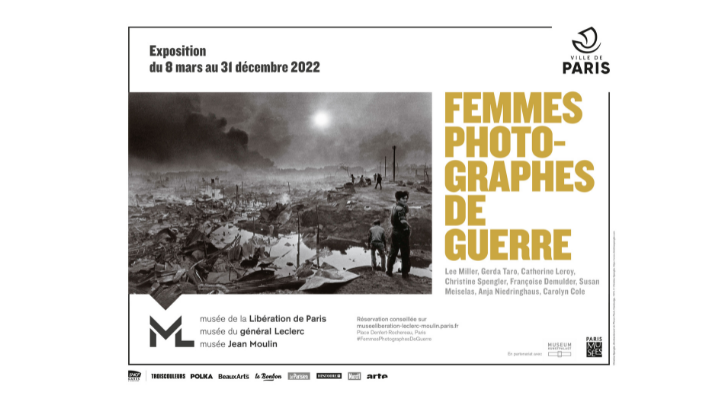
An exhibition co-organized with the Kunstpalast Düsseldorf.

While some consider war photography to be a male-dominated profession, many women photographers have worked in war zones. They have documented conflicts all around the world and played a decisive role in shaping the image of war. Unlike their male counterparts in conflict zones, women photographers often have access to families, of which they produce some especially moving portraits. They are also active on the front lines and take photos of war victims that rarely spare the observer. By highlighting the images taken by these eight women war photographers, the exhibition confronts the visitor with a collective view on the violence of war. It explores the notion of gender, specifically the female gaze on war, and undermines established stereotypes in showing that women are just as capable of photographing and witnessing atrocities as men.
But how should they recount the horrors of war? In their own distinctive way, each of the photographers answer this question. Among the photographs, there are intimate glimpses of everyday life during times of war, testimonies of atrocities, and references to the absurdity of war and its dire consequences.
All of the photographers here seek to contribute to publicly revealing what really happens on the battlefield and behind the front. But the exhibition also shows how certain images are reframed and presented in order to adapt them to the needs of the press or a subjective media viewpoint.
These photographs speak of conflicts near and far, some of which never seem to end. They present the Second World War within the broader context of other 20th and 21st century wars. A worthy addition to the history of contemporary conflicts explored by the Musée de la Libération de Paris - Musée du Général Leclerc - Musée Jean Moulin, they provide visitors with new tools to understanding “the sound and the fury” of the world.
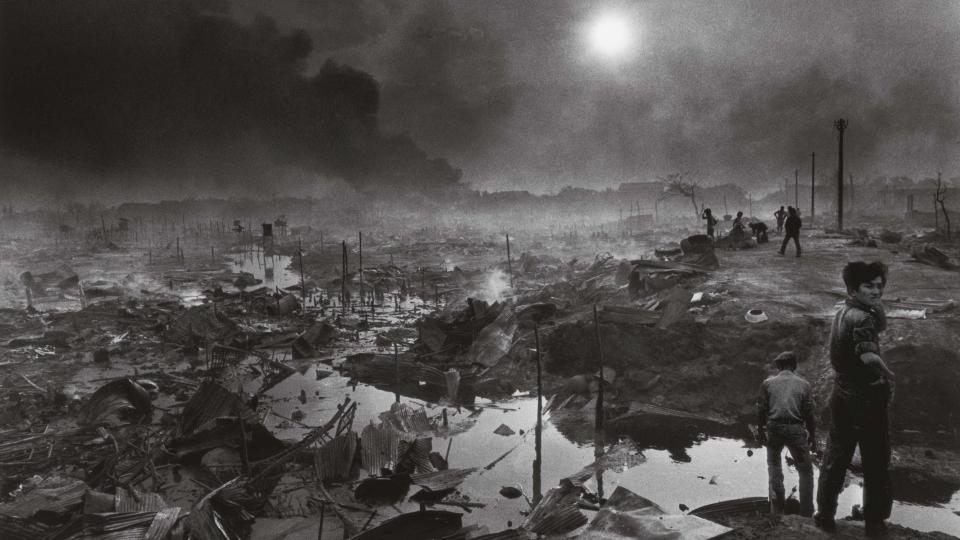
The bombing of Phnom Penh © Christine Spengler
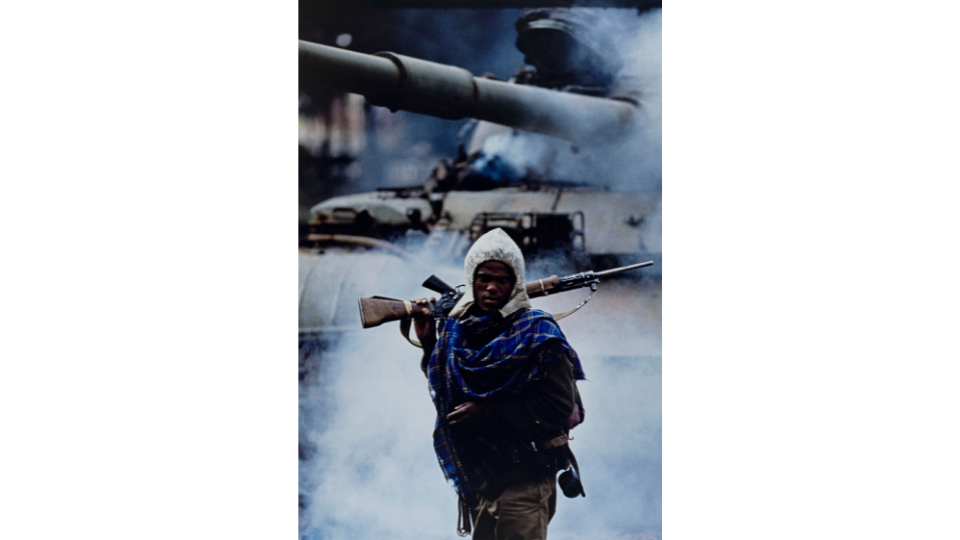
Françoise Demulder, The capture of Addis Ababa: a partisan of the Revolutionary Democratic Front of the Ethiopian Peoples. Ethiopia, 30 May 1991 © Françoise Demulder / Roger-Viollet
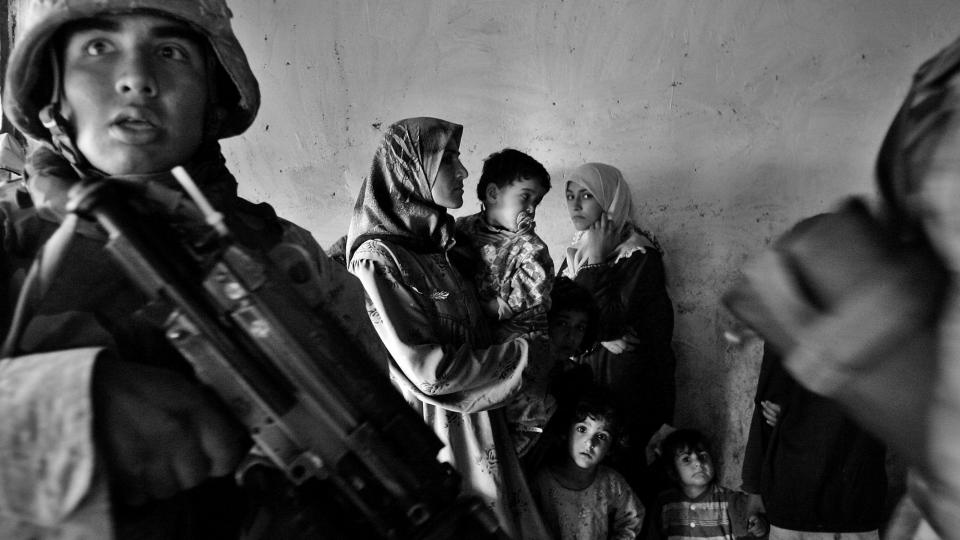
Des Marines américains font irruption au
domicile d’un député irakien dans le quartier
d’Abou Ghraib.
Bagdad, Irak, novembre 2004 © Anja Niedringhaus/AP/SIPA
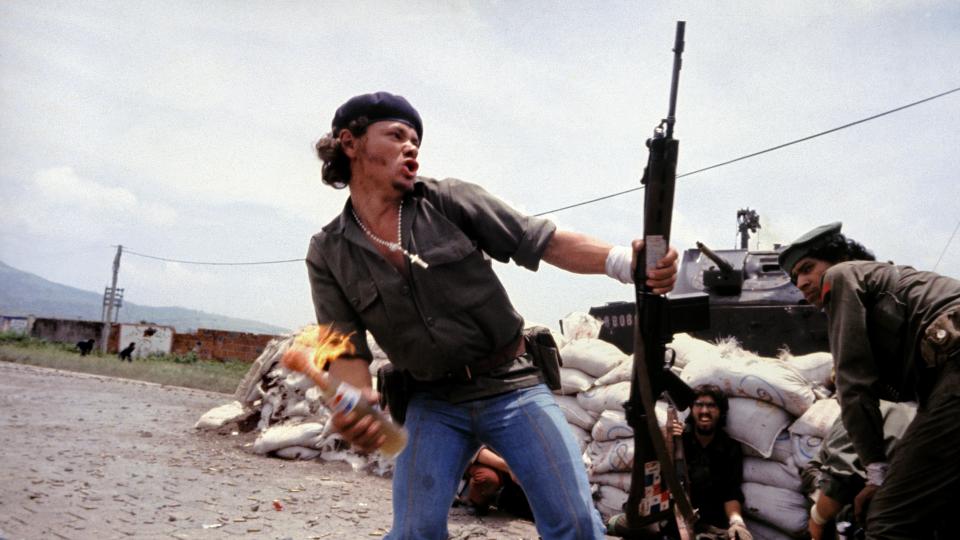
Susan Meiselas, Sandinistas at the walls of the Esteli National Guard Headquarters. Nicaragua, July 1979
© Susan Meiselas / Magnum Photos
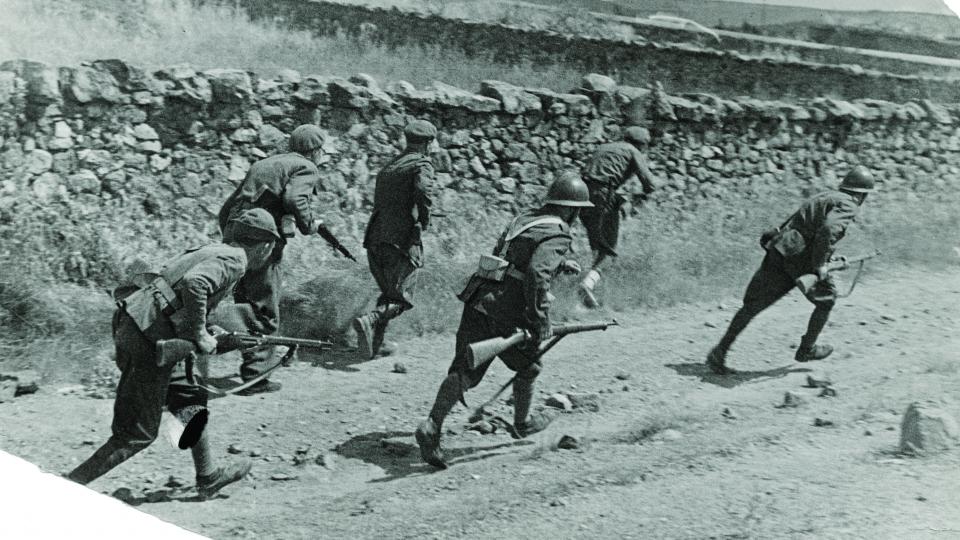
Soldats républicains à La Granjuela sur le front de Cordoue.
Espagne, juin 1937
© Courtesy International Center of Photography
![Sans titre [Bombardement américain de la province de Binh Dinh, Vietnam, septembre 1966], Photo Catherine Leroy](/sites/default/files/styles/960x540/public/2022-02/013-Leroy.jpg?itok=ogCOfSFz)
Sans titre [Bombardement américain de la province de Binh Dinh, Vietnam, septembre 1966].
© Dotation Catherine Leroy
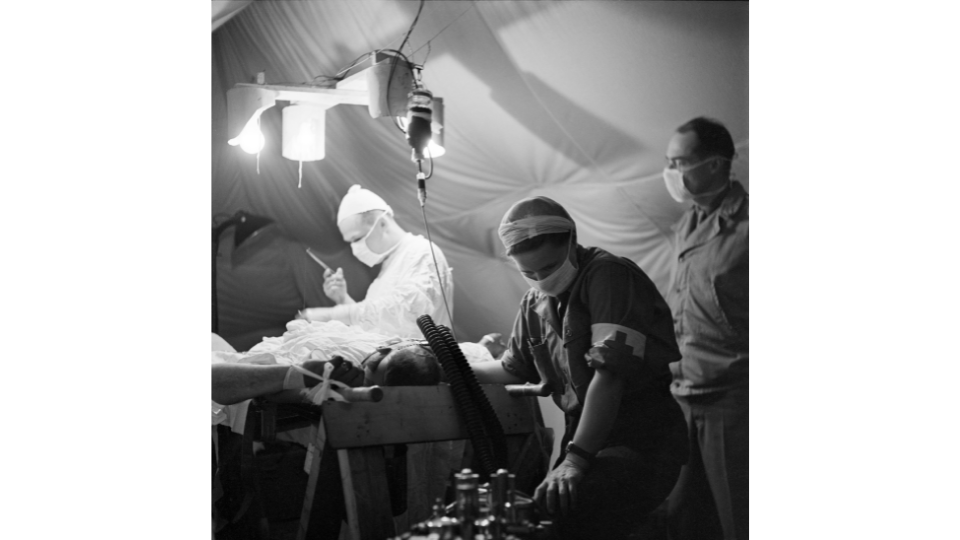
Chirurgien et anesthésiste réalisant une opération dans le 44e hôpital de campagne près de La Cambe en Normandie. France, 1944 © Lee Miller Archives, England 2022
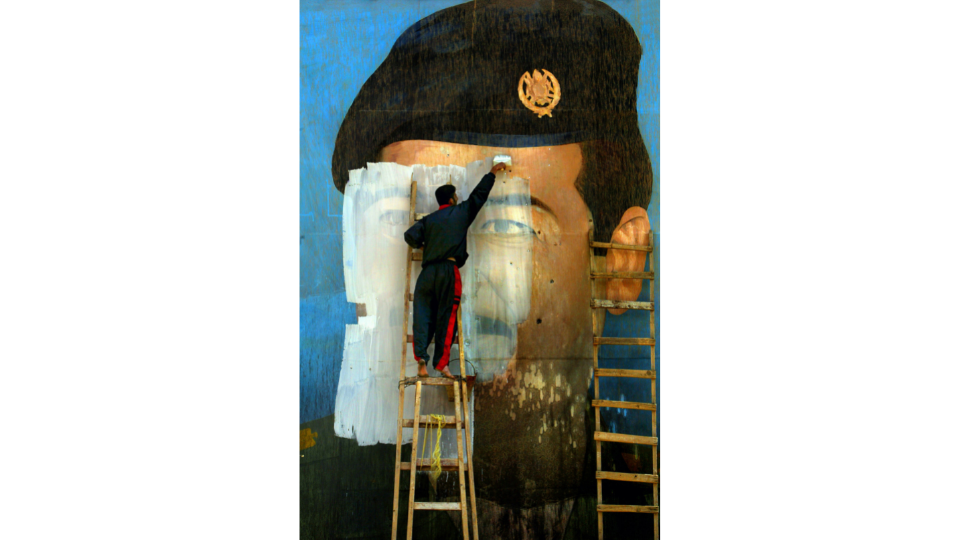
Une photo de Saddam Hussein, criblée
d’impacts de balles, est recouverte de
peinture par Salem Yuel. Les symboles des
dirigeants politiques ont disparu de Bagdad
peu après la prise de la ville par les troupes
américaines.
Bagdad, Irak, avril 2003 © Carolyn Cole / Los Angeles Times
American woman Lee Miller (b. 1907) started her career as a model. She began her apprenticeship as a photographer under Man Ray in Paris in the late 1930s, then opened her own studio before continuing to perfect her skills in New York. Recruited by Vogue, she became their war correspondent with the American Army in 1942 and covered the Liberation in Europe and the discovery of the concentration camps.
Photographer Gerda Taro was born in Germany in 1910. She immigrated to Paris in 1933, where she worked alongside Robert Capa, and became a photographer. In 1936, she travelled to Spain with Capa to cover the Spanish Civil War for the French Communist press. Fatally wounded at Brunete in July 1937, she was more than likely the first woman war photographer to be killed at the front.
Born in Paris, Catherine Leroy became an accredited press photographer in 1966 and covered the Vietnam War until 1969; she was a prisoner of the Vietcong for a brief period in 1968. She also photographed the conflict in Lebanon. Catherine Leroy was the first woman to receive the Robert Capa Gold Medal in 1976.
Following language studies, Christine Spengler travelled to Chad where she became a war photographer. She has covered multiple conflicts, in Europe (Northern Ireland in 1972), in Asia (Vietnam and Cambodia), Africa (Western Sahara), the Middle East, Afghanistan, and Iraq. She has worked for Corbis Sygma, Sipa Press, and Associated Press.
Françoise Demulder studied philosophy before travelling to Vietnam to photograph the war. She worked for Gamma. She later travelled to Cambodia, Angola, Lebanon, and Iraq. In 1977, she was the first woman photographer to receive the World Press Award.
American woman Susan Meiselas is a visual arts graduate. She produced several series on women in the United States before joining Magnum Agency. She has covered conflicts in South America (Nicaragua, El Salvador), and received the Robert Capa Gold Medal in 1979.
Carolyn Cole studied photojournalism in the United States. After working as a photographer for several newspapers, she joined the team of the Los Angeles Times in 1994. She was their war correspondent in Kosovo, and went on to photograph wars in Afghanistan, and Iraq. She received the Pulitzer Prize for her reporting on Liberia.
German woman Anja Niedringhaus studied philosophy and journalism. In 1990, she was the first woman to be hired by the European Pressphoto Agency. In 2002, she began work for Associated Press. She covered conflicts in the former Yugoslavia, Iraq, the Middle East, and Libya. She was killed in fighting in Afghanistan in 2014.
GENERAL CURATOR:
Sylvie Zaidman, Historian, Curator, Director of the Musée de la Libération de Paris - Musée du Général Leclerc - Musée Jean Moulin
SPECIALIST CURATORS:
Felicity Korn,
Advisor to the General Director of the Kunstpalast, Düsseldorf (Germany)
Anne-Marie Beckmann, Director of the Deutsche Börse Photography Foundation, Frankfurt (Germany)
In partnership with

